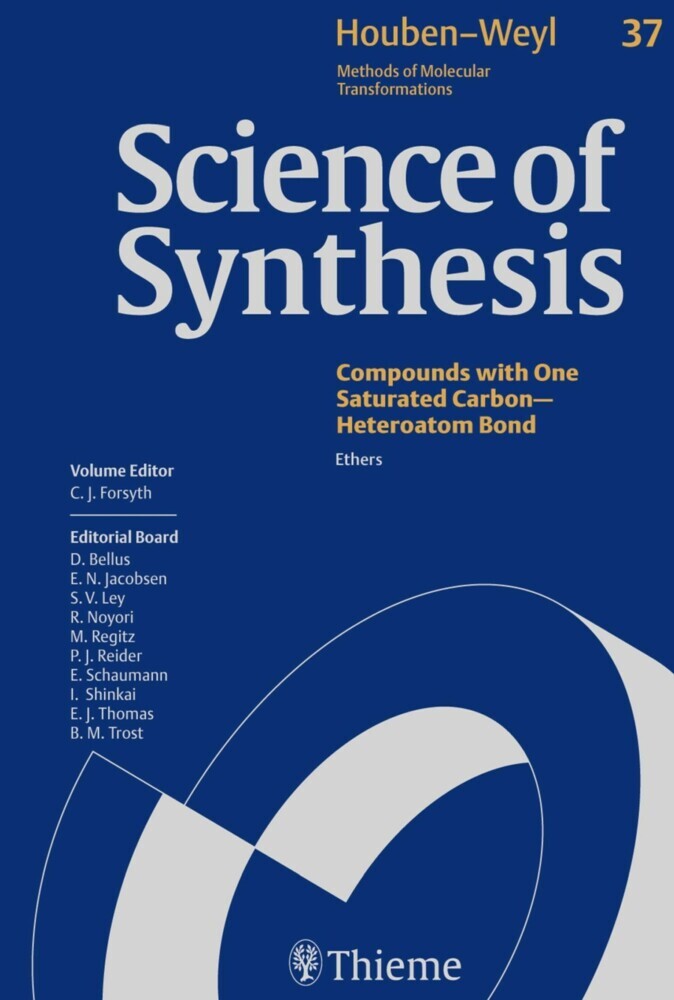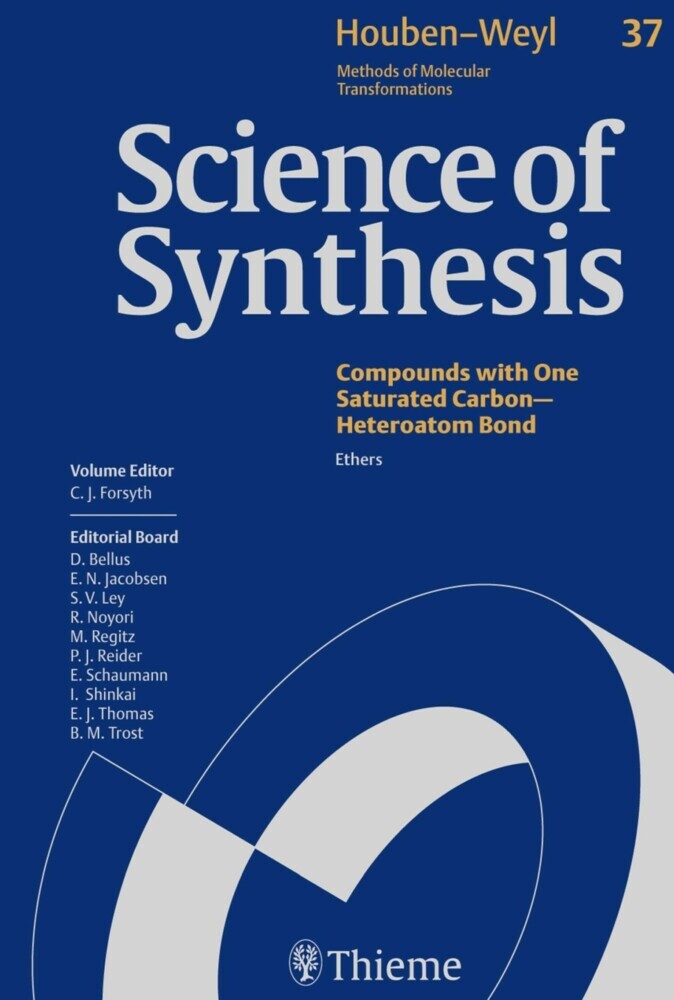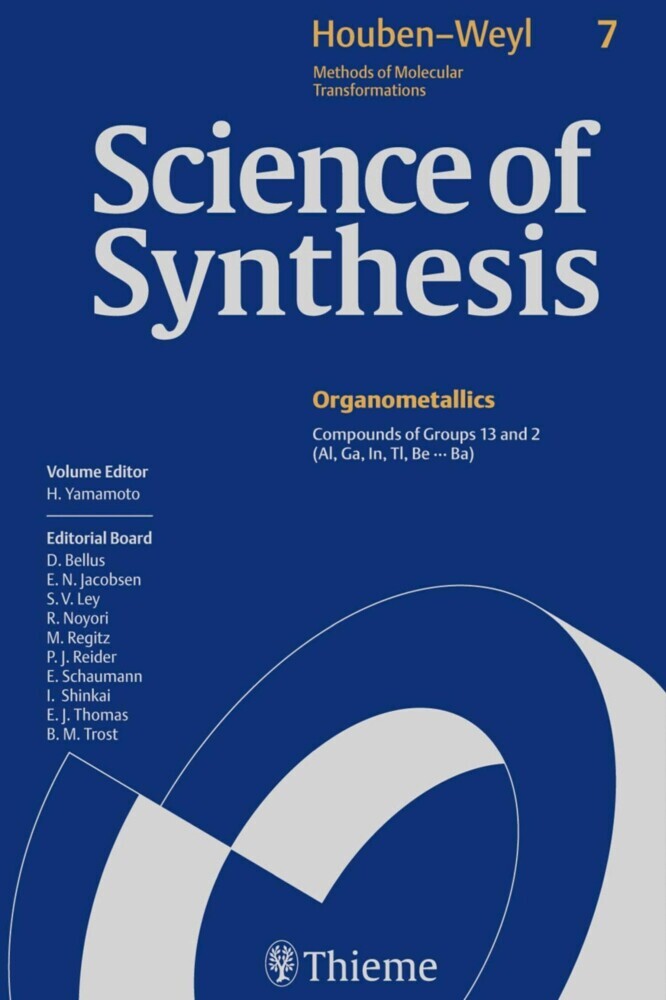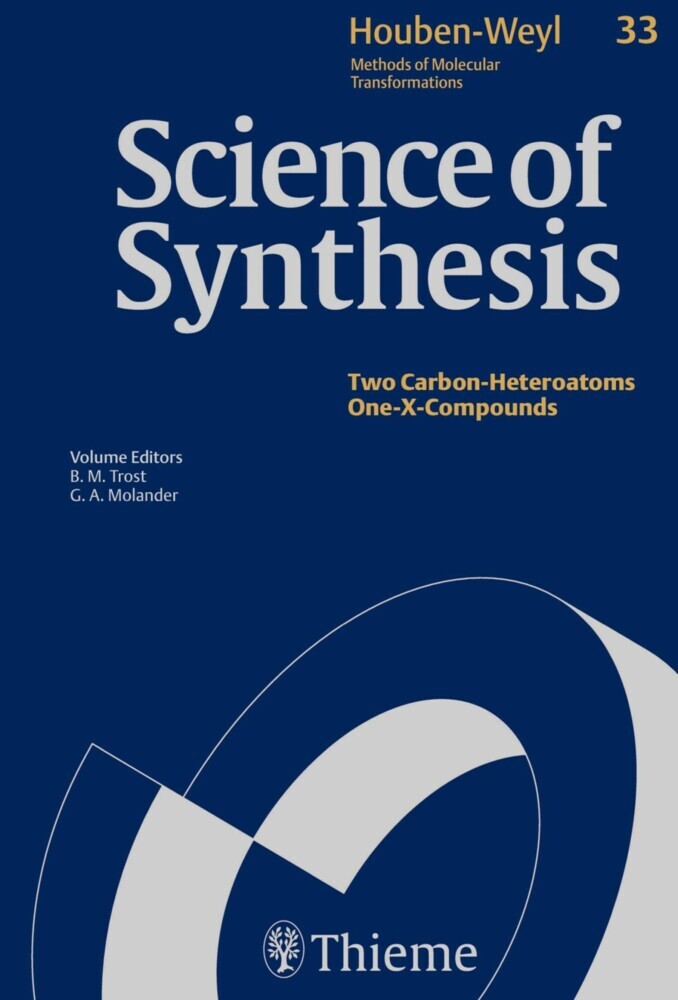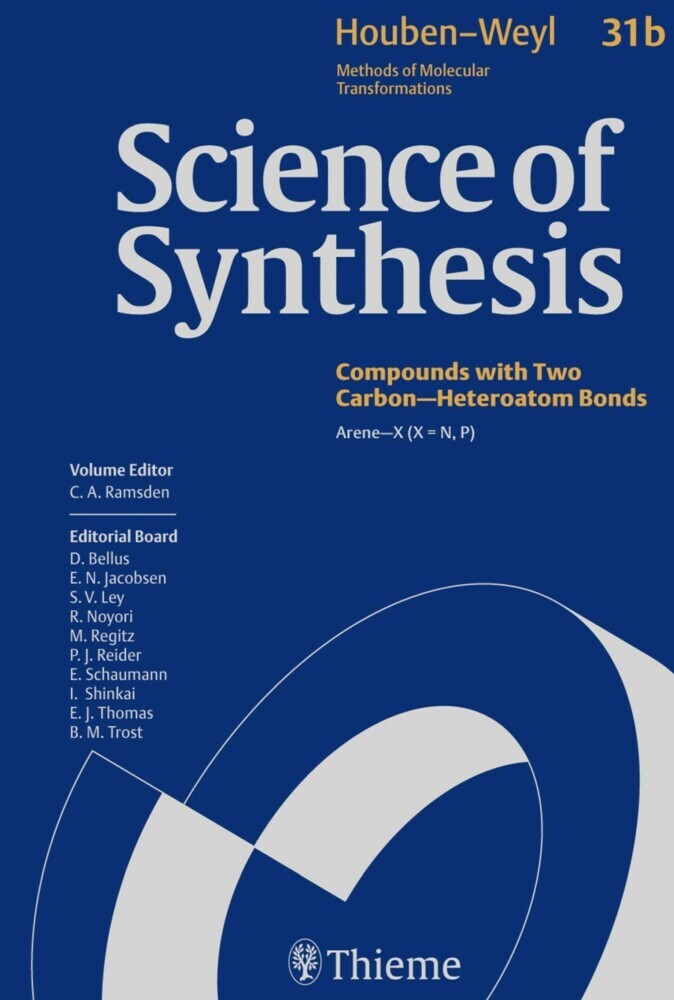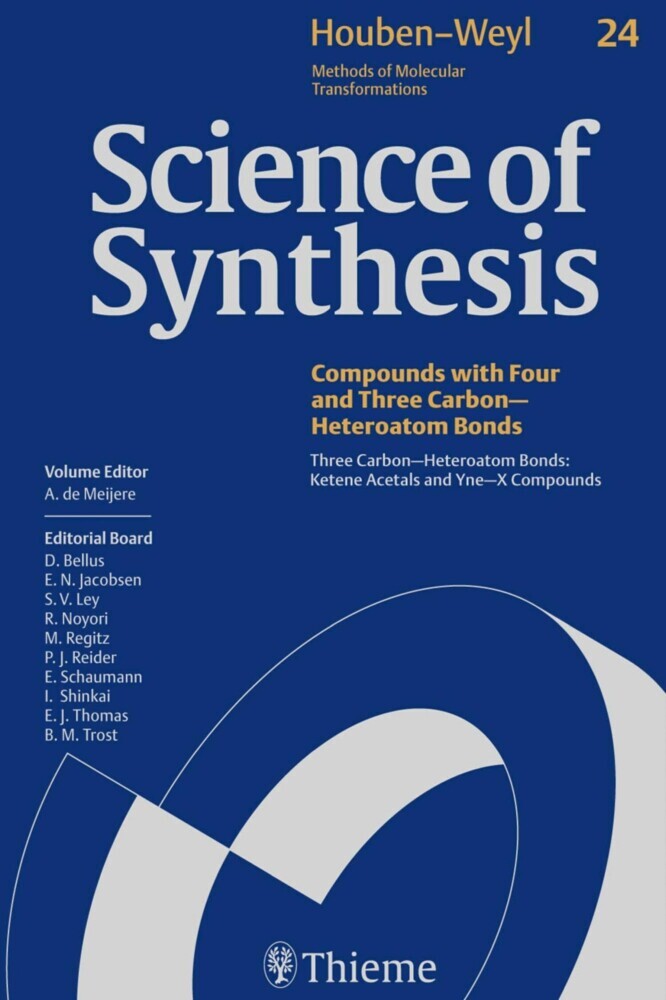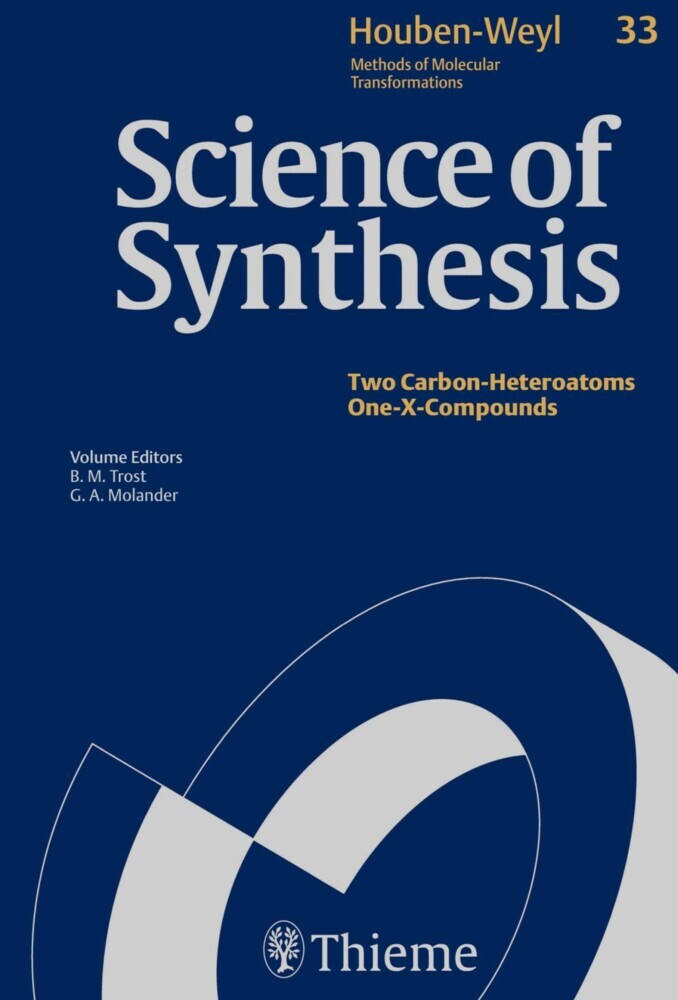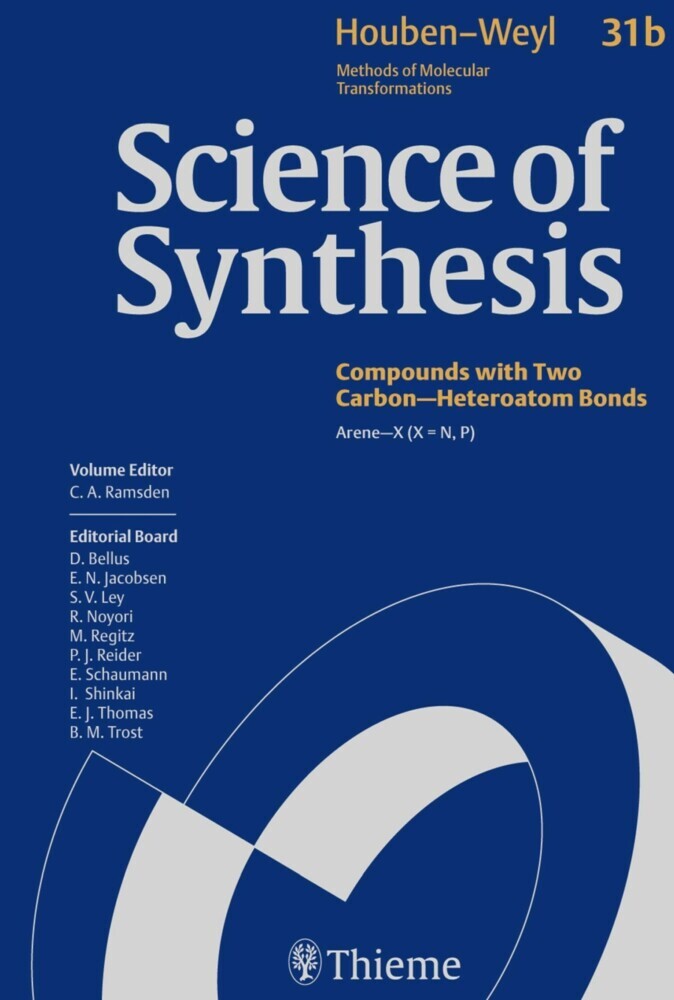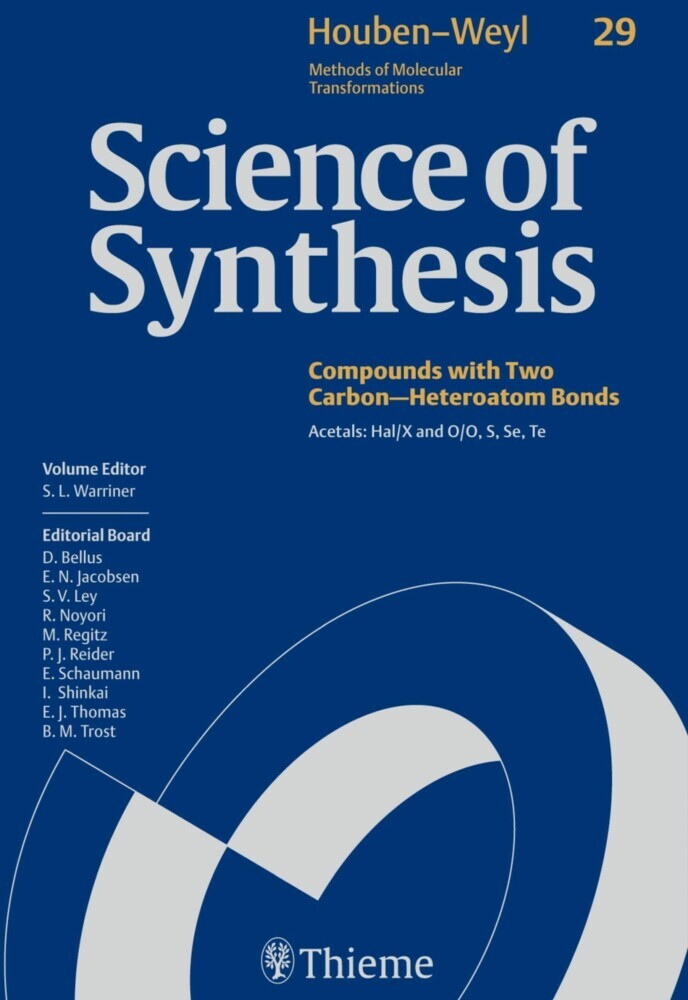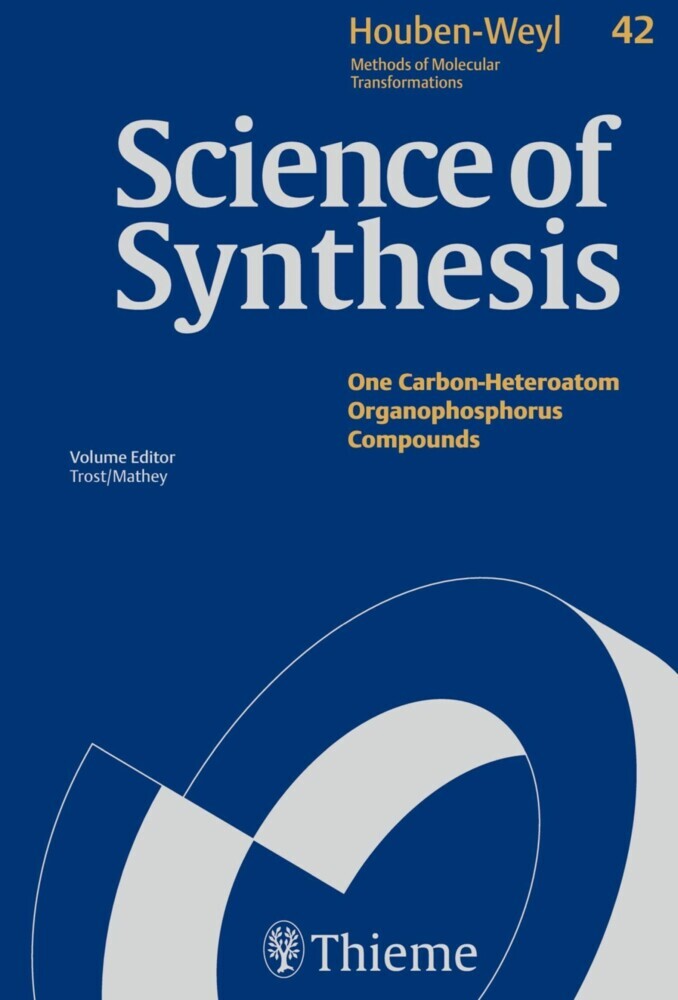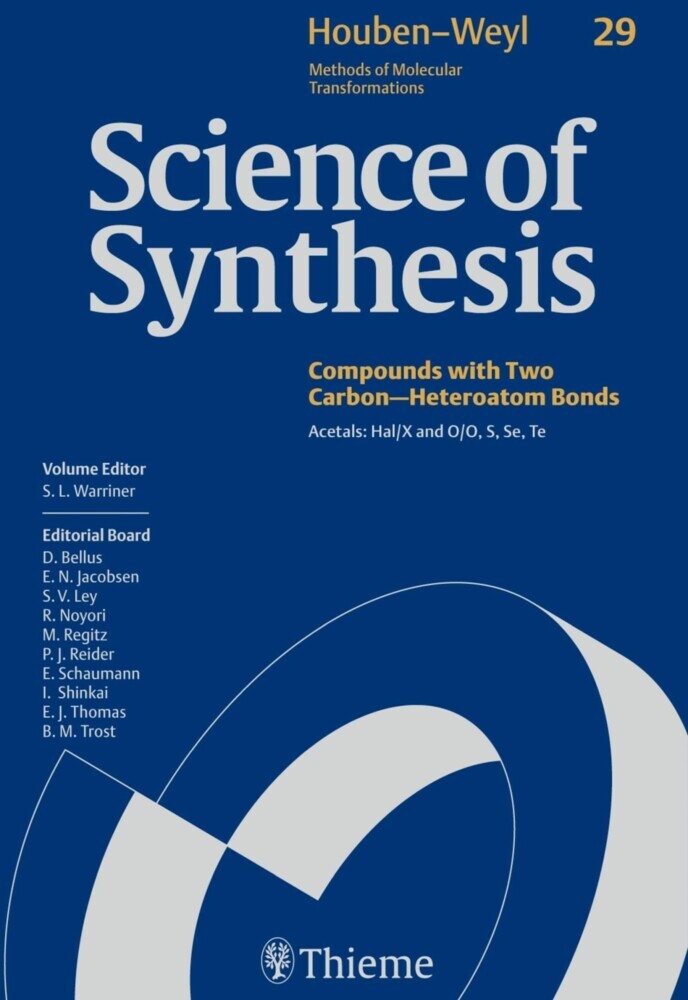Science of Synthesis: Houben-Weyl Methods of Molecular Transformations Vol. 37
Ethers
Science of Synthesis: Houben-Weyl Methods of Molecular Transformations is the entirely new edition of the acclaimed reference series Houben-Weyl, the standard synthetic chemistry resource since 1909. This new edition is published in English and will comprise 48 volumes published between the years 2000 and 2008.
Science of Synthesis is a quality reference work developed by a highly esteemed editorial board to provide a comprehensive and critical selection of reliable organic and organometallic synthetic methods. This unique resource is designed to be the first point of reference when searching for a synthesis strategy.
- Contains the expertise of presently 400 leading chemists worldwide
- Critically evaluates the preparative applicability and significance of the synthetic methods
- Discusses relevant background information and provides detailed experimental procedures
For full information on the Science of Synthesis series, visit the Science of Synthesis Homepage
1;Science of Synthesis - Volume 37: Ethers;1 1.1;Title page;3 1.2;Imprint;5 1.3;Preface;6 1.4;Overview;8 1.5;Table of Contents;10 1.6;Introduction;32 1.7;37.1 Product Class 1: Dialkyl Ethers;40 1.7.1;37.1.1 Synthesis from Esters, Aldehydes, Ketones, and Acetals by Reduction or Alkylation;40 1.7.1.1;37.1.1.1 Synthesis of Acyclic Ethers by Reduction of Esters;40 1.7.1.1.1;37.1.1.1.1 Method 1: Hydrosilylation;40 1.7.1.1.1.1;37.1.1.1.1.1 Variation 1: Under Free-Radical Conditions;40 1.7.1.1.1.2;37.1.1.1.1.2 Variation 2: With Stoichiometric Lewis Acid;41 1.7.1.1.1.3;37.1.1.1.1.3 Variation 3: With a Catalytic Manganese Complex;41 1.7.1.1.2;37.1.1.1.2 Method 2: Sodium Borohydride Reduction;42 1.7.1.1.3;37.1.1.1.3 Method 3: Two-Step Reduction Utilizing an a-Acetoxy Ether;44 1.7.1.1.4;37.1.1.1.4 Method 4: Two-Step Reduction Utilizing an S-Alkyl Thioester;45 1.7.1.2;37.1.1.2 Synthesis of Acyclic Ethers by Alkylation of Esters;46 1.7.1.2.1;37.1.1.2.1 Method 1: Synthesis by a Two-Step Procedure Utilizing an a-Acetoxy Ether;46 1.7.1.2.1.1;37.1.1.2.1.1 Variation 1: Organocuprate Addition;47 1.7.1.2.1.2;37.1.1.2.1.2 Variation 2: Allylstannane Addition;47 1.7.1.2.1.3;37.1.1.2.1.3 Variation 3: Allylsilane, But-2-enylsilane, and Silyl Ketene Acetal Addition;47 1.7.1.2.1.4;37.1.1.2.1.4 Variation 4: Trimethylsilyl Cyanide Addition;48 1.7.1.2.1.5;37.1.1.2.1.5 Variation 5: Organozinc Addition;49 1.7.1.3;37.1.1.3 Synthesis of Acyclic Ethers by Reduction of Aldehydes or Ketones;49 1.7.1.3.1;37.1.1.3.1 Method 1: Hydrosilylation;49 1.7.1.3.1.1;37.1.1.3.1.1 Variation 1: With Iodotrimethylsilane;49 1.7.1.3.1.2;37.1.1.3.1.2 Variation 2: With Alkoxyhydrosilanes;50 1.7.1.3.1.3;37.1.1.3.1.3 Variation 3: With Brønsted Acid Catalysis;50 1.7.1.3.2;37.1.1.3.2 Method 2: Hydrogenation;51 1.7.1.3.3;37.1.1.3.3 Method 3: In Situ Formation of Acetals, Followed by Reductive Cleavage;51 1.7.1.4;37.1.1.4 Synthesis of Acyclic Ethers by Alkylation of Aldehydes or Ketones;52 1.7.1.4.1;37.1.1.4.1 Method 1: Silyl-Modified Sakurai Reaction;52 1.7.1.5;37.1.1.5 Synthesis of Acyclic Ethers by Reduction of Acetals;53 1.7.1.5.1;37.1.1.5.1 Method 1: Metal Hydride Reduction;53 1.7.1.5.1.1;37.1.1.5.1.1 Variation 1: With Diisobutylaluminum Hydride;53 1.7.1.5.1.2;37.1.1.5.1.2 Variation 2: With Lithium Aluminum Hydride;54 1.7.1.5.1.3;37.1.1.5.1.3 Variation 3: With Borane--Dimethyl Sulfide Complex;55 1.7.1.5.1.4;37.1.1.5.1.4 Variation 4: With Triethylsilane;56 1.7.1.5.1.5;37.1.1.5.1.5 Variation 5: With Zinc(II) Borohydride;57 1.7.1.5.2;37.1.1.5.2 Method 2: Hydrogenation;57 1.7.1.6;37.1.1.6 Synthesis of Acyclic Ethers by Alkylation of Acetals;58 1.7.1.6.1;37.1.1.6.1 Method 1: Addition of Allylsilane Reagents;58 1.7.1.6.2;37.1.1.6.2 Method 2: Addition of Allylstannane Reagents;61 1.7.1.6.3;37.1.1.6.3 Method 3: Other Allylation Methods;62 1.7.1.6.4;37.1.1.6.4 Method 4: Addition of Alka-2,3-dienyl- and Propargylsilanes;63 1.7.1.6.5;37.1.1.6.5 Method 5: Addition of Silyl Enol Ethers and Metal Enolates;64 1.7.1.6.6;37.1.1.6.6 Method 6: Addition of Trimethylsilyl Cyanide;68 1.7.1.6.7;37.1.1.6.7 Method 7: Addition of Grignard Reagents;69 1.7.1.6.8;37.1.1.6.8 Method 8: Addition of Organocuprate Reagents;69 1.7.1.6.9;37.1.1.6.9 Method 9: Addition of Organoaluminum Reagents;70 1.7.1.6.10;37.1.1.6.10 Method 10: Cleavage with Lithium Metal;71 1.7.1.7;37.1.1.7 Synthesis of Acyclic Ethers by Alkylation of a-Halo Ethers;71 1.7.1.7.1;37.1.1.7.1 Method 1: Lithiation;71 1.7.1.7.2;37.1.1.7.2 Method 2: Palladium-Mediated Coupling;73 1.7.1.7.3;37.1.1.7.3 Method 3: Addition of Organometallic Reagents;74 1.7.1.7.4;37.1.1.7.4 Method 4: Synthesis by a Two-Step Procedure from an Acetal;74 1.7.2;37.1.2 Synthesis by Substitution;78 1.7.2.1;37.1.2.1 Method 1: Oxidation of C--H Bonds;78 1.7.2.2;37.1.2.2 Method 2: Intramolecular Oxidative Cyclization of Alcohols;79 1.7.2.3;37.1.2.3 Method 3: Ring Opening of Cyclopropanes;80 1.7.2.4;37.1.2.4 Method 4: Williamson-Type
Adolfsson, Hans
Forsyth, Craig J.
| ISBN | 9783131721419 |
|---|---|
| Artikelnummer | 9783131721419 |
| Medientyp | E-Book - PDF |
| Copyrightjahr | 2014 |
| Verlag | Georg Thieme Verlag KG |
| Umfang | 1023 Seiten |
| Sprache | Englisch |
| Kopierschutz | Digitales Wasserzeichen |

